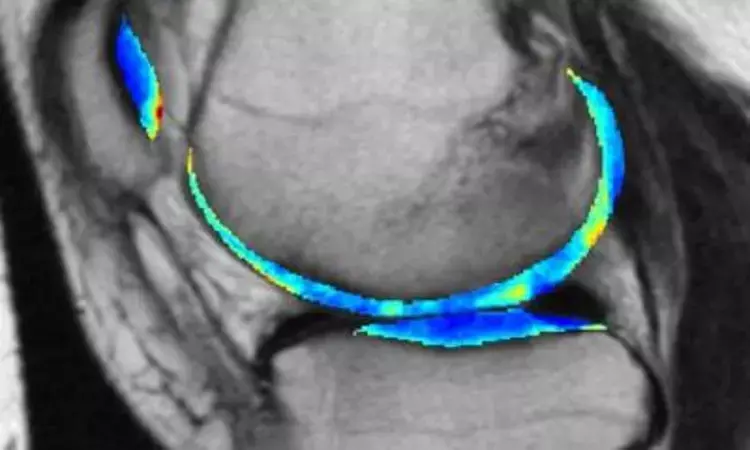- Home
- Medical news & Guidelines
- Anesthesiology
- Cardiology and CTVS
- Critical Care
- Dentistry
- Dermatology
- Diabetes and Endocrinology
- ENT
- Gastroenterology
- Medicine
- Nephrology
- Neurology
- Obstretics-Gynaecology
- Oncology
- Ophthalmology
- Orthopaedics
- Pediatrics-Neonatology
- Psychiatry
- Pulmonology
- Radiology
- Surgery
- Urology
- Laboratory Medicine
- Diet
- Nursing
- Paramedical
- Physiotherapy
- Health news
- Fact Check
- Bone Health Fact Check
- Brain Health Fact Check
- Cancer Related Fact Check
- Child Care Fact Check
- Dental and oral health fact check
- Diabetes and metabolic health fact check
- Diet and Nutrition Fact Check
- Eye and ENT Care Fact Check
- Fitness fact check
- Gut health fact check
- Heart health fact check
- Kidney health fact check
- Medical education fact check
- Men's health fact check
- Respiratory fact check
- Skin and hair care fact check
- Vaccine and Immunization fact check
- Women's health fact check
- AYUSH
- State News
- Andaman and Nicobar Islands
- Andhra Pradesh
- Arunachal Pradesh
- Assam
- Bihar
- Chandigarh
- Chattisgarh
- Dadra and Nagar Haveli
- Daman and Diu
- Delhi
- Goa
- Gujarat
- Haryana
- Himachal Pradesh
- Jammu & Kashmir
- Jharkhand
- Karnataka
- Kerala
- Ladakh
- Lakshadweep
- Madhya Pradesh
- Maharashtra
- Manipur
- Meghalaya
- Mizoram
- Nagaland
- Odisha
- Puducherry
- Punjab
- Rajasthan
- Sikkim
- Tamil Nadu
- Telangana
- Tripura
- Uttar Pradesh
- Uttrakhand
- West Bengal
- Medical Education
- Industry
Artificial intelligence may predict osteoarthritis years before it develops

IMAGE: THE CARTILAGE IN THIS MRI SCAN OF A KNEE IS COLORIZED TO SHOW GREATER CONTRAST BETWEEN SHADES OF GRAY. view more
CREDIT: KUNDU ET AL. (2020) PNAS
PITTSBURGH - Good news for patients of osteoarthritis. The disease could be predicted years before it starts showing signs and symptoms.With this predictive approach, patients could one day be treated with preventative drugs rather than undergoing joint replacement surgery.
Researchers at the University of Pittsburgh School of Medicine and Carnegie Mellon University College of Engineering have created a machine-learning algorithm that can detect subtle signs of osteoarthritis--too abstract to register in the eye of a trained radiologist--on an MRI scan taken years before symptoms even begin. These results will publish this week in PNAS.
"The gold standard for diagnosing arthritis is x-ray. As the cartilage deteriorates, the space between the bones decreases," said study co-author Kenneth Urish, M.D., Ph.D., associate professor of orthopaedic surgery at Pitt and associate medical director of the bone and joint center at UPMC Magee-Womens Hospital. "The problem is, when you see arthritis on x-rays, the damage has already been done. It's much easier to prevent cartilage from falling apart than trying to get it to grow again."
Right now, the primary treatment for osteoarthritis is joint replacement. And the condition is so prevalent that knee replacement is the most common surgery in the U.S. for people over age 45.
For this study, the researchers looked at knee MRIs from the Osteoarthritis Initiative, which followed thousands of people for seven years to see how osteoarthritis of the knee develops. They focused on a subset of patients who had little evidence of cartilage damage at the beginning of the study.
In retrospect, we now know which of these participants went on to develop arthritis and which didn't, and the computer can use that information to learn subtle patterns on the MRI scans of presymptomatic people that are predictive of their future osteoarthritis risk.
"When doctors look at these images of the cartilage, there isn't a pattern that jumps out to the naked eye, but that doesn't mean there's not a pattern there. It just means you can't see it using conventional tools," said lead author Shinjini Kundu, M.D., Ph.D., who completed this project as part of her graduate training in the Pitt Medical Scientist Training Program and Carnegie Mellon Department of Biomedical Engineering.
To validate this approach, Kundu, who now is a resident physician and medical researcher at the Johns Hopkins Department of Radiology, trained the model on a subset of the knee MRI data and then tested it on patients it had never seen before. Kundu did this dozens of times, with different participants withheld each time, to test the algorithm on all the data.
Overall, the algorithm predicted osteoarthritis with 78% accuracy from MRIs performed three years before symptom onset.
Currently, there are no drugs that prevent presymptomatic osteoarthritis from developing into full-blown joint deterioration, though there are a few highly effective drugs that can prevent patients from developing a related condition--rheumatoid arthritis.
The goal is to develop the same types of drugs for osteoarthritis. Several candidates already are in the preclinical pipeline.
"Instead of recruiting 10,000 people and following them for 10 years, we can just enroll 50 people who we know are going to be getting osteoarthritis in two or five years," Urish said. "Then we can give them the experimental drug and see whether it stops the disease from developing."
Hina Zahid Joined Medical Dialogue in 2017 with a passion to work as a Reporter. She coordinates with various national and international journals and association and covers all the stories related to Medical guidelines, Medical Journals, rare medical surgeries as well as all the updates in the medical field. Email: editorial@medicaldialogues.in. Contact no. 011-43720751
Dr Kamal Kant Kohli-MBBS, DTCD- a chest specialist with more than 30 years of practice and a flair for writing clinical articles, Dr Kamal Kant Kohli joined Medical Dialogues as a Chief Editor of Medical News. Besides writing articles, as an editor, he proofreads and verifies all the medical content published on Medical Dialogues including those coming from journals, studies,medical conferences,guidelines etc. Email: drkohli@medicaldialogues.in. Contact no. 011-43720751


